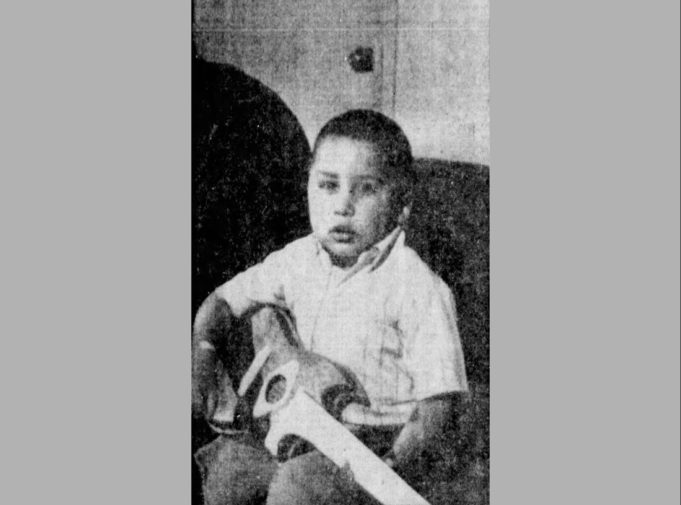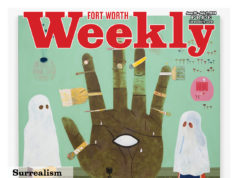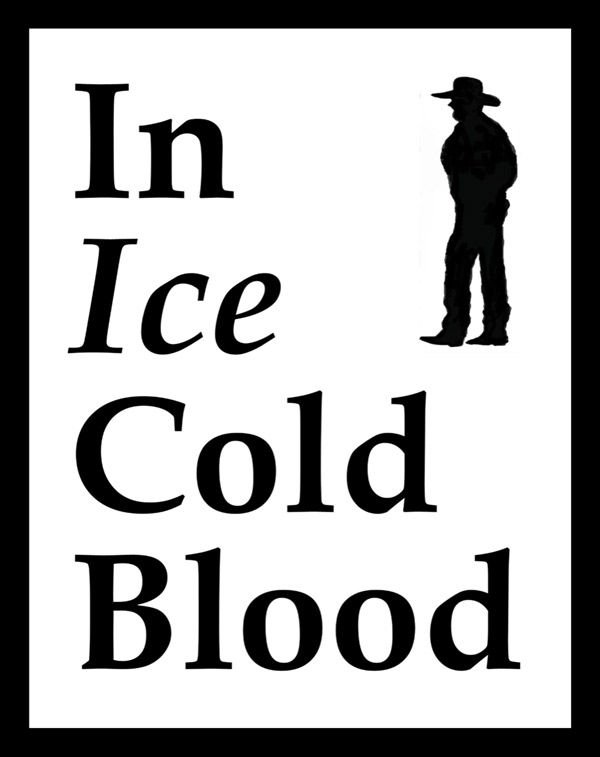
The Fort Worth police reports are long gone, and the two suspects are no longer identified.
A routine traffic stop for a defective muffler on May 13, 1968, brought two men to the attention of Fort Worth patrolman Ken Adcock. The 40-year-old driver, a Fort Worth resident, was operating the vehicle with a suspended license. His passenger, 24, also a Fort Worth resident, was carrying a .22-caliber firearm. The driver fit the physical description provided by an almost month-old APB still circulating about a multiple homicide in South Texas. The APB was based on a description proffered by a 20-year-old service station attendant named Dave Lordon in Sonora, Texas.
The driver who aroused Adcock’s suspicions was around 6 feet tall and had recently, though inexpertly, dyed his hair black. The driver’s passenger wore footwear matching Lordon’s boot description. At the time of the traffic stop, the suspects were also in possession of several hundred Mexican pesos, a Mexican billfold and ID belonging to neither of the two men, an unused bus ticket from Waco to Laredo, and a baggage stub indicating where luggage had been checked in Waco and picked up in Laredo. The two men were taken into custody and placed in the Tarrant County jail.
It wasn’t an exact match, but Adcock’s intuition told him it approached a composite of the various parts. The two men were definitely suspicious, and after what happened to a young Tejano family, there was no reason to ignore the possibility.
*****
In mid-April 1968, a 29-year-old Mexican American named Juan Manuel Arellano was informed that his sister, Victoria Chavarria, was about to give birth in San Angelo, Texas, and that he should head up as soon as possible if he wanted to greet her newborn. Juan was living with his wife and kids in Villa del Fuente, a village outside Piedras Negras, Mexico, at the time. It was an almost 200-mile trip, but family was important. Juan decided to make the drive.
Juan and wife Monica Lopez Arellano, 24, had three kids of their own, and they loaded up their blue, four-door, 11-year-old Buick Special on Tue., April 16, 1968, and headed north. With them were their son, 5-year-old Juan Manuel Jr.; their daughter, Leticia, 2; Manuel Eduardo, 15 months; and Juan’s 21-year-old sister, Rosa Elia Santos Arellano.
Texas wasn’t a place the Arellanos were unfamiliar with or overly wary of. In fact, at that time, Monica’s brother, Raymond Garza, was campaigning to become the sheriff of Zavala County in South Texas, and the Arellanos’ car (registered in Texas) featured bumper stickers promoting Garza’s campaign.
But about 40 miles north of Mexico, along a rugged, desolate stretch of U.S. Route 277 between Loma Alta and Sonora, the Buick had a flat. Juan pulled over and fixed it, but the Buick had another flat a few miles farther along. Some folks stopped on the side of the road to check on the Arellanos, and others drove past. Juan, a native Texan, spoke fluent English and conversed with passersby or gave them friendly waves. Eventually, a seemingly congenial Texas Samaritan in a pickup truck stopped and agreed to give Juan, his family, and the flat tire a ride up to Sonora to get the tire fixed and return them back to the Buick. Who rode in the front of the pickup (besides the Samaritan) and who rode in the back is unknown, but they arrived in Sonora around 8:45 p.m. While Juan and Juan Jr. walked to a nearby cafe and ordered hamburgers and other foodstuff for the return trip, Dave Lordon fixed their tire. Juan paid for the repair from a wad of cash he retrieved from and then re-tucked into his pants pocket, and the Arellanos and the Samaritan began the return trip to the Buick.
The bodies of Juan Manuel Arellano and the other five members of his family were found strewn along a two-mile stretch of US-277 the next morning.
*****
The scene of the carnage was about 100 miles south of San Angelo, 32 miles south of Sonora and eight miles north of Loma Alta, near the entrance of the W.L. “Bud” Whitehead Ranch. Juan’s body was found beyond a fence in a Whitehead Ranch pasture. He had been beaten and then shot to death with a .22-caliber pistol. His pockets were turned inside out.
Wearing a red sunsuit and white baby shoes, 15-month-old Eduardo was found lying face-down in a bar ditch. His sister Leticia and brother Juan Jr. were found nearby. Leticia had been shot between the eyes with a .22-caliber pistol, the bullet passing through the back of her head. She was taken to the Lillian M. Hudspeth Memorial Hospital in Sonora. Juan Jr. had been shot once in the back of the head and stabbed at least four times in the abdominal area. He was taken to a Del Rio hospital and then transferred to the Santa Rosa Hospital in San Antonio. A .22 bullet had entered his skull above and behind the right ear and exited through his mouth.
Monica and Rosa were found dead of .22-caliber gunshot wounds two miles farther south on US-277. Monica’s badly bruised body lay in morbid repose against a fence line. Rosa was lying nude on top of her clothing. She had been raped and shot.
Al Halfmann, a San Angelo carpet shop operator, told law enforcement that he had seen members of the slain family near their Buick late Tuesday afternoon in the company of two other women. One of the women was standing with the family and the other was sitting behind the wheel of a 1957 bronze Oldsmobile parked behind the Arellanos’ Buick.
An Oil Field Bus Lines driver on a run from Sonora to Del Rio reported that he saw a white pickup with its headlights on parked next to the Arellanos’ Buick at approximately 7 p.m. Tuesday night. When the bus driver made his return run later that evening, the white pickup was gone and the Arellanos’ Buick appeared abandoned.
The San Angelo Standard-Times said an unidentified border patrolman also reported that “he saw four white boys parked on the side of the road Tuesday near the slaying scene.” Then, a service station attendant in Comstock (28 miles west of Del Rio) informed authorities that he had seen a late-model, cream-colored Plymouth Wednesday morning with blood smears on the trunk and blood dripping from the vehicle.
Except for a green card belonging to Monica Arellano’s sister, Maria Cantu, law enforcement personnel found few other personal belongs in the Arellano family’s Buick. This led officers to believe Cantu was possibly a seventh victim, and they spent additional time searching for her body along the dusty route.
Initially transported to Del Rio, the bodies of the deceased were transferred to the Johnson Funeral Home in San Angelo the night of Wed., April 17, for autopsies.
Lordon was questioned for a few hours earlier that day, and he described the so-called Samaritan as a freckle-faced white male with sandy hair, a ruddy complexion, and a rash or pockmarks on his neck, wearing decorative cowboy boots (with a design on the toe) and carrying a skinning knife. Lordon identified some of the bodies when they were en route from Del Rio to San Angelo, and he also indicated that the Anglo had borrowed the service station’s jack and lug wrench but hadn’t returned them.
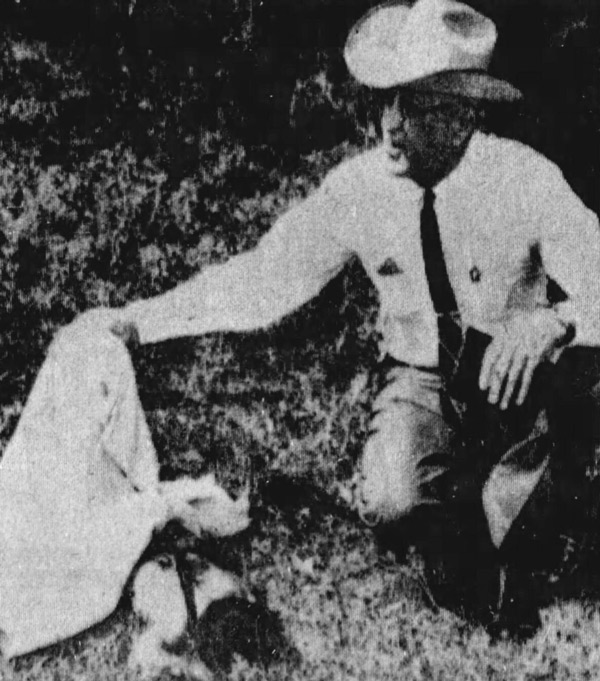
San Angelo Standard-Times (April 18, 1968)
*****
On Thu., April 18, a local named J.T. Quigg came forward and spoke with the Standard-Times. A “husky road equipment operator” for a county highway crew, Quigg and two other members of his crew saw the Arellano family on the side of the road at about 6:15 p.m. Tuesday and stopped and offered to help but didn’t have the right equipment. He and the others went on, and when he passed back by heading home about 7 p.m., he saw the family but didn’t stop. Juan “waved at me like he was saying ‘hello,’ just a goodwill gesture.”
On the way into work Wednesday morning, Quigg passed the car at the same place and noted that it was empty. He stopped by the Whitehead Ranch, apparently to inquire about it, and the owner, Bud Whitehead, told him that a ranch hand named Jose Delgado had spotted someone in the pasture and that they thought he was ill. Delgado, Whitehead said, “just rode by the man and knew something was wrong.”
Whitehead, Quigg, and Jack Brown drove out to the spot where Delgado had seen the man, who was lying face-down about 40 yards from the highway. He wasn’t breathing.
It was Juan Arellano.
Whitehead, Quigg, and Brown turned to go telephone law enforcement but spotted another small body about 35 yards away from the highway. They drove over to it, and the sight overwhelmed Quigg. It was a plump toddler clad in red, lying face-down in a patch of weeds. He had huge, gaping stab wounds in his back. The second body was little Eduardo.
“We got out of the pickup and walked over to it and saw a small child stabbed three times in the back,” Quigg said, later adding, “I’m a big man, and I’ve seen quite a few things, but after seeing the little boy, I had to go off and cry.
“About 8 feet toward the highway, we found two more small bodies,” Quigg continued. “In looking, we discovered that at least one child was still breathing.”
It was Leticia.
Five minutes after they realized Leticia was breathing, Juan Jr., whom they had presumed was dead, “began to come to life.”
Whitehead said, “He kept trying to get up. The boy kept saying ‘agua, agua, quero agua.’ ”
Whitehead and Quigg gave him some water, and the rancher stopped him from trying to get up due to his wounds. Whitehead, who spoke Spanish, asked Juan Jr. his name, but the boy never answered.
“He kept sticking his finger in his mouth,” said Whitehead, who hadn’t realized Juan Jr. had been shot.
“We gave him two swallows of water, and then I walked to the top of the hill and called the law in Sonora,” Quigg said, adding that it was the “most bloodthirsty thing” he had ever seen.
Whitehead sat with Juan Jr. for 40 minutes waiting on an ambulance. “I have never seen children cut up like that,” he said.
A Catholic priest was summoned for Leticia Arrellano early Wed., April 17. She was still unconscious, and the right side of her body was paralyzed.
Mexican relatives of the Arellanos, including Maria Cantu, were brought to Del Rio from Piedras Negras to formally identify the deceased victims that afternoon, and authorities questioned them about Juan Sr., inquiring as to whether they knew if he had any enemies. A translator was present, and though the Arellanos’ relatives were on the verge of hysterics, they said Juan had no enemies and was a hard-working, honest man.
2-year-old Leticia Arellano never regained consciousness and died the following evening at 6:30 p.m.
*****
When Juan Arellano Jr. first arrived at the Del Rio hospital, he begged health-care attendants not to stab him anymore (in Spanish). When he was transferred to the Santa Rosa Hospital in San Antonio, he was kept under 24-hour guard.
Texas Ranger A.Y. Allee Jr., out of Ozona, was put in charge of the investigation, and he wanted to speak to Juan Jr. as soon as possible. Attending physicians said it might be a while. They discovered a second gunshot wound to his head, and his cranial trauma and the resultant surgeries had impaired his hearing.
By Fri., April 19, 1968, law enforcement were at a self-described “standstill” in the investigation. Fingerprints of the Arellanos’ Buick and a bullet recovered from one of the victims were sent to the Department of Public Safety in Austin. Some investigators believed the bloodshed was the work of one man. Others believed there were other perpetrators involved. When Juan Manuel Arellano’s brother-in-law Raymond Garza was informed of the murders by incumbent Zavalla County Sheriff C.L. Sweeten, Garza’s opponent in the current campaign, he said he doubted that robbery was motive for the homicidal rampage.
The results of a San Angelo autopsy revealed that Monica and Rosa Arellano had been shot multiple times; Juan Sr. had been shot in the head; and 15-month-old Eduardo had been stabbed four times in the back. An Army photo identified by one witness was circulated, but no connection was ever established.
On Tue., April 23, Lordon, quite curiously, was arrested and placed in the Sutton County jail in Sonora for forgery and trying to pass a bad check.
One week later, Juan Arellano Jr. was able to speak with Bexar County Sheriff deputies and Texas Ranger Tol Dawson with the aid of a special hearing device. Chief Texas Ranger investigator A.Y. Allee said Juan Jr. seconded Lordon’s testimony, confirming that a “big cowboy” in a pickup had stopped to help his family after their second flat tire, adding that after the tire was fixed, the white “Samaritan” drove a while and started shooting out the window at deer and rabbits along the road. When Juan Sr. attempted to intervene, he and the “big cowboy” fought. Juan Jr. said his father wrestled the gun away from the white “Samaritan” but then had it wrested back away from him — at which point the “big cowboy” began the slaughter
Around the same time Juan Jr. was being interviewed, Lordon took and passed a polygraph test regarding his testimony but remained in custody under a $1,000 bond related to his forgery and bad check charges.
*****
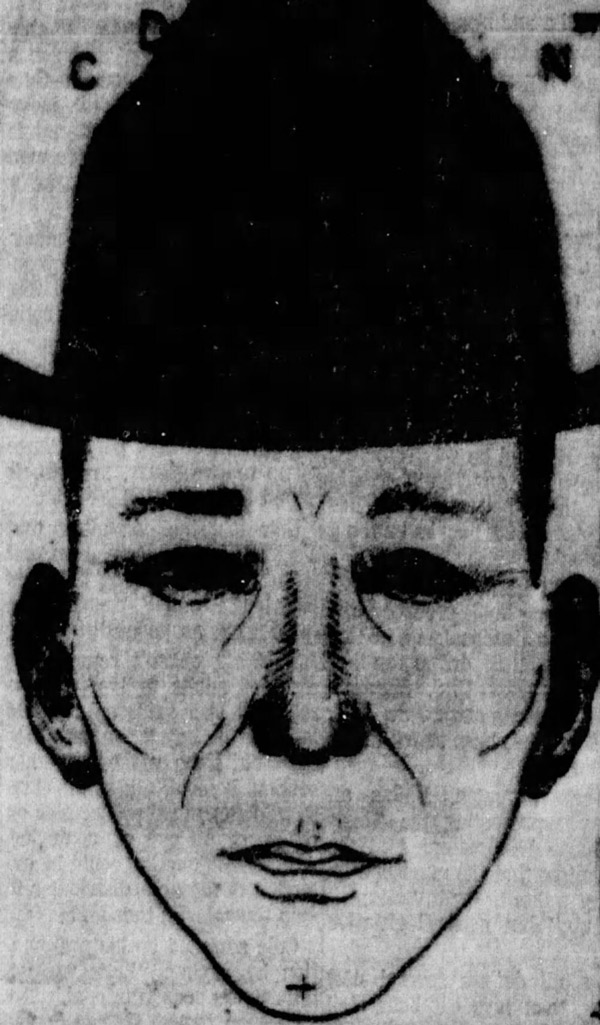
San Angelo Standard-Times (April 17, 1969)
On Mon., May 6, 1968, Juan Manuel Jr. was released from the Santa Rosa Hospital in San Antonio and reportedly identified his family’s attacker. His uncle, Raymond Garza, said the boy pointed to a police-supplied photograph and communicated in Spanish, “I know that man.”
When confronted by the press, Juan Jr. made no mention of the murders. He could hardly hear. He simply strummed a small guitar and sang some songs he learned in Piedras Negras.
Juan Jr. was taken to live with relatives in Mexico, and law enforcement agencies disseminated the photo the boy identified and a description of the suspect. That’s what led Fort Worth patrolman Adcock to be suspicious of the two men he pulled over in mid-May.
On Tue., May 15, the suspects Adcock took into custody were placed in a lineup in Fort Worth for Lordon and Ranger Allee. Lordon didn’t recognize them.
In September 1968, after investigating officers had interviewed innumerable persons and pursued every possible lead in the Arellano case, Allee issued a request for help and cooperation from the general public.
By December 1968, the Monitor of McAllen, Texas, and the Brownsville Herald were calling the Arellano homicides the worst crime of 1968, but the overall investigation had ground to a halt. Though the inquiry into the carnage was run by Ranger Allee, the actual crime had occurred along a short strip of US-277 that skirted the northwestern edge of Edwards County. And Edwards County Sheriff Tom Henderson was at a loss.
“I sometimes give up hope,” he said, “but unless the man is caught, he is going to strike again. I am sure.”
Henderson believed the “big cowboy” was a psychopath and “a man who kills for the sheer love of it.”
Sheriff Henderson also suggested the testimony law enforcement were able to gather from Juan Jr. was a mixed bag and probably somewhat unreliable due to the young boy’s cranial trauma and possible brain damage.
“The kid never told a very good story,” Henderson said. “He goes from one thing to another. He can’t hear much. He is so little. He sort of wanders. You have to remember he was shot in the head twice and had head operations.”
*****
As I was researching the Arellano murders, I was troubled by some of the basic logistics.
If Juan Jr.’s early remembrance was correct, one “big cowboy” subdued and murdered three adults and three small children single-handedly and no one appeared to attempt to escape. Something about it didn’t add up.
I went back through the reports. The “big cowboy” supposedly drove a pickup truck, and it was very unlikely that the truck had a crew cab. That meant some of the family sat in the front seat with the cowboy and others in the back in the bed of the truck. People did that in those days and well into the 1980s.
I wondered who rode in the front.
Juan Arellano Sr.? Just him and the cowboy or him and the cowboy and maybe Juan Jr. between them? He may not have been comfortable with his wife and sister and the youngest children riding up front with a strange man. And didn’t Juan Jr. have to have been sitting in the cab to know what the cowboy was shooting at out the window?
Or was it Monica Arellano and Rosa in the cab of the truck with the cowboy, each sitting with a toddler in their lap, and Juan Sr. and Jr. in the back?
At some point along a lonely, dark stretch of the US-277, the truck stopped, Juan stepped away from it with the cowboy, the cowboy shot Juan, and then returned. How far away had they gone? A second autopsy pronounced the times of death between 10 p.m. and midnight. It would have been dark, and Monica and Rosa wouldn’t have been able to see much in the front or back of the pickup truck.
If the “big cowboy” was shooting at deer and rabbits out the driver’s-side window, he was probably doing it with a pistol, which he would have had to reload. That was probably the excuse he used to stop. To reload.
Or maybe the “big cowboy” shot something and asked Juan Sr. to help him go find it. Surely, Senior was ready to get back to the Buick. Juan Sr. and the cowboy may have scuffled after the cowboy reloaded, near the truck or a short distance away. The cowboy assaulted Juan Sr. and shot him in the head. Some of the reports indicate a blood trail. Senior may have tried to crawl for help.
The “big cowboy” returned to the truck in the dark. The order is unclear, but he shot Leticia with the pistol only inches away from her face, so the bullet passed through the back of her head and perhaps struck whomever was holding her. The cowboy shot Monica and Rosa, one of whom may already have been hit by the bullet passing through Leticia’s head. The 15-month-old was obviously not a flight risk. The cowboy may have saved him for last, when he ran out of bullets, again.
The only Arellano who may have turned to flee was 5-year-old Juan Jr., who was shot from a downward angle behind his right ear, the bullet, again, exiting his mouth. He may not have been unconscious and was probably moving. The cowboy subsequently stabbed him five times. The cowboy also stabbed young Eduardo in the back four times. He may have flung Eduardo, Leticia, and Juan Jr. away from the truck.
Then, the “big cowboy” drove two miles farther south with Monica and Rosa in the front or back of the truck. They were probably in the bed. He pulled over, lifted Monica out of the back of the truck and slung her or propped her against the fence. He moved more slowly with Rosa, undressing her before or after he took her out of the bed of the truck. Probably before.
The ground out there on the side of the road was rocky or sandy. He placed Rosa’s clothing on the ground and then he laid her lifeless, naked body on top of them. Then, he committed an act of necrophilia. It wasn’t reported in the press originally, but Allee mentioned it in a San Angelo Standard-Times piece on the murder 10 years later.
Early on, robbery was suggested as the motive for the murders — but this new detail indicated an additional or entirely different motive. The troubling logistics made more sense. They explained why there was no mention of evidence of Rosa struggling or having her clothes ripped or torn as she attempted to escape. Or her assailant’s flesh under her fingernails.
We don’t exactly know what transpired or the sequence of events. The “big cowboy” himself may even be dead now, and Juan Jr., located by brash Ranger Sgt. Brooks Long in 2006, had no recollection besides what was in the papers. I reached out to a member of the family, but they had no comment.
As the crime is still unsolved, records of the criminal investigation are not available. Whatever the facts were regarding what befell the Arellanos in South Texas in April 1968, it was characterized as a “sadistic bloodbath” by local officials, and it was at least as cold-blooded as what happened in Kansas to the Clutter family as immortalized in Truman Capote’s In Cold Blood — and arguably much worse. But it never garnered serious national headlines, certainly didn’t attract the interest of writers of Capote’s abilities, and didn’t even rank statewide with a freakish decapitation of a cleaning lady by a Texas Tech grad student in Lubbock the same year.
The .22-caliber murder weapon never turned up. By the early 1980s, thousands of pages of witness testimony and evidentiary-findings documents had been collected, but the investigation had gone cold.
Ice cold.
Which reminds me of how some writers phrase their character’s emotional and physical response when they encounter unfathomable evil or reprehensible monstrosity. They say their character’s blood froze.
*****
In the decades that followed, Ranger Allee came to believe that Lordon’s sudden check forgeries so soon after the crime were suspicious and that he may have been involved in the murders. Maybe Lordon knew more. Maybe Lordon knew the “big cowboy” and knew better than to cross him. Maybe Lordon was passing bad checks because he feared for his own life and was trying to gather money and leave town.
In 2006, Ranger Long told the San Angelo Standard-Times that an anonymous tip from 1999 now had the investigation on third base, remarking that three decades before investigators hadn’t even been in the ballpark, but, metaphorically speaking, the new evidence apparently left the runner stranded on third in the final inning of Long’s investigation. The tip apparently led nowhere.
In 2018, 50 years after the Arellanos were murdered, a retired Sonoran man named Pedro “Pete” Savala Gomez placed a memorial for the Arellano family on the side of the road 34 miles south of Sonora. Gomez’s youngest sister’s husband, who spoke fluent Spanish and English, was who was asked to serve as interpreter for Juan Jr. and Allee at the Santa Rosa Hospital in San Antonio in 1968. Gomez passed away on June 4, 2023.
In January 1968, the body of 22-year-old Michael Robineau, the Anglo heir to a Colorado oil fortune, was found in Tom Green County near Wall, Texas, 68 miles north of Sonora. Over 6 feet tall, blonde, handsome, and affable, Robineau was described in the Standard-Times as epitomizing “in a way, the ultimate in American dreams.” Miguel Gallegas Ybarra — a 21-year-old Mexican American from Odessa, whom the Standard-Times called “everything Robineau was not” — confessed to the murder. The story appeared in newspapers from California to Florida, in the Boston Globe and even The New York Times.
Four months later, news of the “sadistic” slaughter of the Arellanos barely made it out of the state and is still unknown to most Texans.
Some believe the ghosts of the Arellano family wander the areas along the US-277 where the family perished. Others say Hispanics are hesitant to travel the thoroughfare altogether. When I asked a Mexican-American friend who grew up in the San Angelo area at the time about the case, he remembered it and recalled a special travel advisory of sorts shared among the Tejano community at the time.
“We were told never to stop for gas in Sonora,” he said. “Fill up before you go.”
I think what haunts the region now is the mystery behind the depraved butchery in 1968 and our blatant disremembrance of the Arellanos’ fate.
What if their last name had been “Robineau” or “Clutter”?
Fort Worth native E.R. Bills is the author of Tell-Tale Texas: Investigations in Infamous History and The 1910 Slocum Massacre: An Act of Genocide in East Texas.



